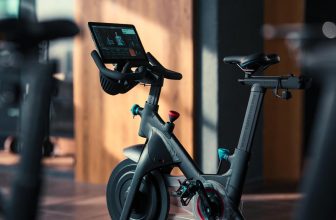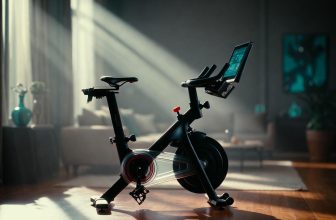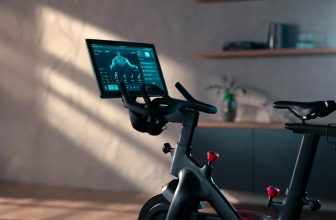Table of Contents
- Which Exercise Bike is Best Recumbent or Upright?
- Understanding Upright Exercise Bikes
- Benefits of Upright Bikes
- Drawbacks of Upright Bikes
- Exploring Recumbent Exercise Bikes
- Benefits of Recumbent Bikes
- Drawbacks of Recumbent Bikes
- Physiological and Performance Differences
- Who Should Choose Which Bike?
- Upright Bikes Are Best For:
- Recumbent Bikes Are Best For:
- Workout Effectiveness and Calorie Burn
- Practical Considerations
- Cost and Features
- Maintenance Tips
- FAQ
- Which bike is better for weight loss?
- Are recumbent bikes good for seniors?
- Can upright bikes cause back pain?
- How do I choose between the two?
- Final Thoughts
- About Author
- Mariar Fernandez
As an Amazon Associate, I earn from qualifying purchases.
Which Exercise Bike is Best Recumbent or Upright?
Which Exercise Bike is Best Recumbent or Upright? The best exercise bike depends on your fitness goals, physical condition, and preferences. Upright bikes are ideal for high-intensity, full-body workouts and space-saving, while recumbent bikes offer comfort, back support, and low-impact exercise, especially for those with mobility issues or joint pain.
Understanding Upright Exercise Bikes
Upright exercise bikes mimic the posture of traditional outdoor cycling, with the rider sitting in a forward-leaning position. They engage multiple muscle groups, including the core, quads, hamstrings, and glutes, making them ideal for those seeking a dynamic, high-intensity workout.
Benefits of Upright Bikes
- Full-Body Engagement: Upright bikes require core stabilization and slight upper-body involvement, enhancing overall muscle activation. According to a study from Columbia University, upright bikes engage the core more effectively than recumbent bikes due to the upright posture.
- Space-Saving Design: Their vertical structure occupies less floor space, perfect for small apartments or home gyms.
- High-Intensity Workouts: Adjustable resistance levels support high-intensity interval training (HIIT), burning approximately 250–400 calories per 30 minutes for a 150-pound person at moderate intensity.
- Versatility: Suitable for beginners to advanced users, with customizable settings for varied fitness goals.
Drawbacks of Upright Bikes
- Less Comfort for Long Sessions: The forward-leaning posture may strain the lower back or wrists during extended use.
- Not Ideal for Joint Issues: The weight-bearing nature can exacerbate knee or hip discomfort for some users.
For tips on proper setup to avoid strain, check out Hospital for Special Surgery’s guide on bike setup.
Exploring Recumbent Exercise Bikes
Recumbent bikes feature a reclined seating position with a backrest, prioritizing comfort and lower-body focus. They are popular in rehabilitation settings and for users with mobility or joint concerns.
Benefits of Recumbent Bikes
- Superior Comfort: The reclined position with back support reduces strain on the spine and joints, ideal for long sessions or those with back pain.
- Low-Impact Exercise: A study from Western Michigan University found recumbent bikes produce less joint stress at lower workloads (65 watts), making them suitable for arthritis or injury recovery.
- Cardiovascular Benefits: Recumbent bikes elevate heart rate effectively, with UConn Health noting their use in stress tests for real-time heart imaging.
- Accessibility: The reclined design aids users with balance issues or restricted mobility, as highlighted by Harvard Health.
Drawbacks of Recumbent Bikes
- Limited Muscle Engagement: Less core activation compared to upright bikes due to the seated position.
- Larger Footprint: Recumbent bikes require more floor space, which may not suit compact spaces.
- Lower Power Output: A University of Texas study found maximal power is typically 13–19% lower in recumbent positions compared to upright, though heavy flywheels can mitigate this.
Learn more about recumbent bike benefits for heart health at UConn Health’s Cardiology Center.
Physiological and Performance Differences
A 2002 study from Western Michigan University compared physiological responses between upright and recumbent bikes at varying workloads:
- At 65 watts: Upright bikes elicited higher heart rates and perceived exertion.
- At 89 and 121 watts: Recumbent bikes showed greater physiological responses, indicating higher effort at intense levels.
A 2024 University of Texas study using the inertial load method found recumbent bikes produced 1.3% higher maximal power output than upright bikes with heavier flywheels (19.5–22.10 kg). This suggests recumbent bikes can match or exceed upright bikes in specific high-intensity scenarios.
| Metric | Upright Bike | Recumbent Bike |
|---|---|---|
| Heart Rate (65 watts) | Higher | Lower |
| Perceived Exertion | Higher at low intensity | Higher at high intensity (89–121 watts) |
| Max Power Output | 838.9 W (average) | 849.0 W (1.3% higher with heavy flywheels) |
| Core Engagement | High | Low |
| Joint Impact | Moderate | Low |
Who Should Choose Which Bike?
Upright Bikes Are Best For:
- Fitness Enthusiasts: Ideal for those seeking intense, full-body workouts or HIIT.
- Space-Conscious Users: Compact design suits small living spaces.
- Younger or Active Individuals: The upright posture suits those without joint or mobility issues.
Recumbent Bikes Are Best For:
- Seniors or Rehabilitation: Low-impact design supports joint health and recovery.
- Users with Back Pain: Backrest reduces spinal strain, as noted by Harvard Health.
- Beginners or Balance-Challenged: Stable seating enhances safety and comfort.
For detailed exercise guidelines, visit Harvard Health’s exercise tips.
Workout Effectiveness and Calorie Burn
Both bike types support the Physical Activity Guidelines for Americans, recommending 150 minutes of moderate-to-vigorous activity weekly. Tufts University notes that 15-minute high-intensity sessions on either bike can match the benefits of 30-minute moderate sessions, depending on effort.
- Upright Bike: A 150-pound person burns 250–400 calories in 30 minutes at moderate intensity, with HIIT sessions increasing burn.
- Recumbent Bike: Similar calorie burn but may feel less intense due to comfort, encouraging longer sessions.
For weight loss strategies using exercise bikes, explore CUNY’s high-intensity workout guide.
Practical Considerations
Cost and Features
- Upright Bikes: Typically $200–$1,500, with models like Peloton offering interactive screens. Consumer Reports suggests checking ratings for durability.
- Recumbent Bikes: Range from $300–$2,000, often with ergonomic seats and heart rate monitors.
Maintenance Tips
- Clean Regularly: Wipe down after use to prevent sweat damage.
- Inspect Parts: Check pedals and seats for wear.
- Lubricate: Apply lubricant to moving parts as per manufacturer guidelines.
FAQ
Which bike is better for weight loss?
Both bikes aid weight loss when paired with a healthy diet. Upright bikes may burn slightly more calories due to core engagement, but recumbent bikes encourage longer sessions, balancing the effect. Aim for 150–300 minutes weekly at moderate intensity.
Are recumbent bikes good for seniors?
Yes, recumbent bikes are ideal for seniors due to their low-impact design and back support, reducing fall risk and joint strain.
Can upright bikes cause back pain?
Improper setup or prolonged use may strain the back. Adjust seat and handlebars to maintain a neutral spine, as advised by HSS.
How do I choose between the two?
Consider your fitness level, space, and health conditions. Test both types at a store, as recommended by Harvard Health.
Final Thoughts
Choosing between a recumbent and upright exercise bike hinges on your specific needs. Upright bikes excel for intense, space-efficient workouts, while recumbent bikes prioritize comfort and accessibility, especially for rehabilitation or seniors. Evaluate your goals, test both options, and ensure proper setup to maximize benefits and minimize injury risk.







